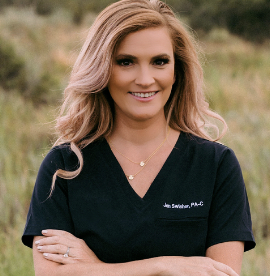Drowning Myths, Missteps, and Pro-Tips: The Truth about Submersion Events

By Jen Swisher, PA-C and Geoff Comp, DO
Summer is here - and we know all too well that drowning and water-related medical emergencies rise during this time of year.
As emergency medicine providers, we all have one degree of separation from a tragic story of a submersion event. While we’re well-versed in the in-hospital care of a drowning victim, it’s possible that we may also have to play the part of first responder at home, the pool, river, lake, or beachside.
Are you ready to take action outside of the ED? Matt DeLaney, MD and Geoff Comp, DO are.
Matt and Geoff “dive in” and chat about Drowning Myths, Missteps, and Pro-tips on this month’s ERcast. They cover out-of-hospital care, recent updates, treatment strategies, and special considerations for water submersion-related accidents.
Plus, Geoff answers tough questions like whether we should ever terminate life-saving efforts on scene, whether it’s more beneficial to a drowning victim’s survival to drown in cold versus warm water, and whether abdominal thrust/suctioning aids in airway clearance in a drowning victim.
Here are some key pearls from Drowning Myths, Missteps, and Pro-tips:
- Very few drowning victims (0.5%–5%) have cervical spine injuries, and most of them have concerning historical components (observed jumping from heights, boating accidents, neurologic deficits, altered mental status). Therefore, immobilization should not delay or interrupt cardiopulmonary resuscitation.
- The European Resuscitation Council recommends 5 initial rescue breaths instead of 2 (as recommended by the American Heart Association) because the initial ventilations can be less effective in drowning victims.
- The best predictor of outcome is neurologic status over the first 24 hours after drowning.
- Definitions and preferred terminology:
- Terms such as “near drowning,” “dry/wet drowning,” “secondary drowning,” and “active/passive drowning” should be avoided
- Drowning is a process resulting in primary respiratory impairment from:
- Submersion - airway below liquid
- Immersion - liquid splashed into the airway
- The victim may live or die during and/or after this process
- Outcomes are classified as death, morbidity, and no morbidity
Dispelling “Dry Drowning”
The media has recently sensationalized the term “dry drowning.” But is this even a thing?
It’s important to have a consistent vocabulary so we can address what is truly contributing to morbidity and mortality as it relates to submersion injuries and how we can prevent these tragedies from occurring in the first place.
“Dry drowning” is typically the lay way of describing a mild water aspiration event that leads to an acute lung injury hours to days after the initial exposure.
Think of the child who goes underwater for a few seconds and sputters as soon as they resurface or are removed from the water. The fear is this minor aspiration incident can progress to respiratory failure. However, this is exceedingly rare, especially if there is no loss of consciousness reported.
Yet, there are still many cases of misdiagnosed “dry drowning.” For example, one case of alleged “dry drowning” deaths was later found to be due to myocarditis on autopsy, not drowning-related.
Despite this, articles are still being published this year claiming that “dry drowning” incidences are “equally as dangerous” to true submersion injuries, which simply is not true. The same publications go on to describe how the water doesn’t reach the lungs in these events.
Now, coughing, gasping, or sputtering after a near-drowning incident is usually indicative of water entering the trachea (which by definition is an aspiration event) that can lead to lung damage. But that’s not what we’re talking about here. Almost all young children who play in the water swallow insignificant amounts of water by way of splashing or jumping. Notice the term swallow and not inhale or aspirate.
Not only is “dry drowning” not a technical medical term, but it’s arguably a red herring, distracting from the following facts which we know to be true about water-related injuries.
What We Do Know
According to the CDC, fatal drowning is the leading cause of death for children 1-4 years of age and the second leading cause of unintentional injury death for children 5-14 years old. 1 to 4-year-olds have the highest drowning rates, with the majority of incidents occurring in swimming pools.
Like any good public health measure, prevention is key. All types of water-related accidents can be combated with age-appropriate swim lessons, appropriate barriers around bodies of water, wearing floatation devices on boats, and a dedicated undistracted sober adult water watcher or lifeguard.
Now, what happens when prevention isn’t enough and it’s time to decide whether to seek medical care after a near-drowning event?
The guidelines here are simple. All drowning victims who require rescue from under the surface of the water, resuscitation, or have any signs of respiratory distress after the event (including coughing, gagging, choking, and gasping) should seek immediate medical attention.
Regardless of the duration of time underwater or seemingly mild post-submersion symptoms, these patients should be evaluated in the emergency department. With the aforementioned scenario, it’s more likely than not that water has entered the airway, but it’s not possible to fully assess whether or not lung damage is present without observation and full assessment.
Water Facts to Keep in Mind and Share
- The U.S. Coast Guard reported 658 boating-related deaths in 2021 where 81% died by drowning. 83% of these people were not wearing life jackets. Life jackets can save lives, especially when boating and swimming!
- Where location was known, 80% of reported fatal child drownings occurred in residential settings (victim’s home, or that of a family member, friend, or neighbor) with 91% of these incidents occurring in children under 5 years old. Two-thirds of drowning events in infants < 1 year old, happened in the bathtub. For children 1-4 years of age, most drownings occur in home swimming pools. Approximately 40% of cases in children 5-14 occur in natural water and roughly 30% in pools. For those over 15 years old, over half of drowning events occur in natural waters (lakes, rivers, or oceans).
- On average, from 2020 through 2022, there were an estimated 6,300 pool- or spa-related, hospital emergency department (ED)-treated, nonfatal drowning injuries each year. 76% of these nonfatal drowning injuries involved children < 5 years old.
- Racial disparities in drowning fatalities are important to consider. Rates of drowning deaths for American Indian or Alaska Native people < 29 years old are 2x higher than that of White people, with rates 3.5x higher for 25-29-year-olds. Black people are at a 1.5x higher risk of dying from drowning than White people, with the highest rates (2.6x higher) among Black children 5-9 years and ages 10-14 (rates 3.6x higher). Specifically in pools, Black children 10-14 years old drown at rates 7.6x higher than White children. Drowning occurs more frequently in public pools for Black children and in residential pools for White children. American Indian or Alaska Native people have the highest drowning death rates in natural water, with rates 2.7x higher than White people.
- Alcohol use is involved in up to 70% of deaths associated with water recreation (boating or swimming) in adolescents and adults, with approximately 1 in 4 ED visits for drowning and about 1 in 5 reported boating deaths.
For more on water safety and drowning prevention, listen to Drowning Myths, Missteps, and Pro-tips on this month’s ERcast. We’d love to hear your thoughts! Leave us a comment (ERCast > July 2023 > Chapter 7 > Discussion) and join us in discussing this important topic to debunk misinformation.
Sources:
https://www.cdc.gov/drowning/index.html
https://www.cpsc.gov/content/Pool-or-Spa-Submersion-Estimated-Nonfatal-Drowning-Injuries-and-Reported-Drownings-2023
https://pubmed.ncbi.nlm.nih.gov/30004377/
https://pubmed.ncbi.nlm.nih.gov/20889519/
https://www.who.int/publications/i/item/global-report-on-drowning-preventing-a-leading-killer
https://www.ncbi.nlm.nih.gov/pmc/articles/PMC1730083/
https://uscgboating.org/library/accident-statistics/Recreational-Boating-Statistics-2021.pdf
https://pubmed.ncbi.nlm.nih.gov/33549689/
Practice-Changing Education
Experience education that goes beyond theory. Explore Hippo Education’s offerings below.


